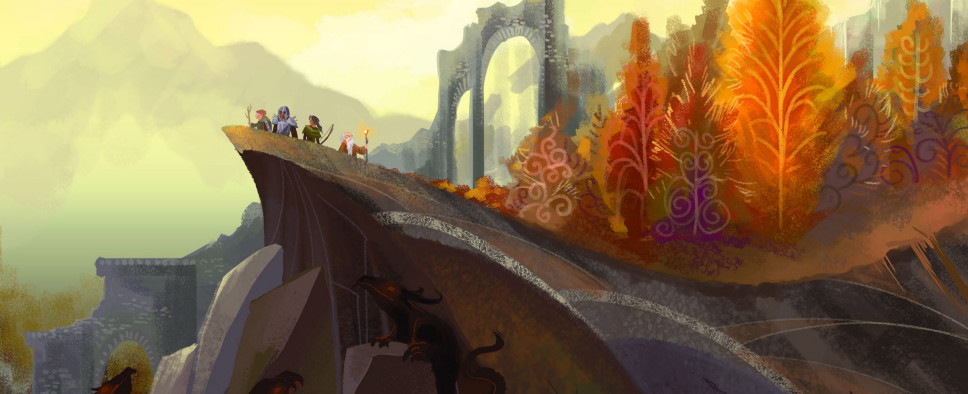Wildermyth Review - Page 2
-
Category: ReviewsHits: 17446

Article Index
It helps that the actual comics are very conscious of word economy and don't overload you with pointless exposition. All the exchanges you get are punchy and to the point. And sure, some of the events fit your current campaign better than others, and on occasion, some wires get crossed and an event makes close to no sense in or out of context. But that doesn't happen too often.
The game's papercraft art style also does a lot of heavy lifting. All the backgrounds in Wildermyth look like paintings, and all the objects, which includes your characters, look like they're made out of paper - low-budget but well-crafted miniatures in a board game. This approach allows the developers to keep their backgrounds pretty and their characters modular. And they seem to have mastered the art of making their rather simplistic models portray emotions. A crooked smile here or a raised eyebrow there is all that's needed to elevate some simple joke from a forgettable comic strip to a chuckle-worthy moment.
And after an event is finished and your choices get preserved to be brought up at some later date, you're oftentimes treated to a combat encounter.
Systems and Combat
Your enemies come in several distinct factions, ranging from mutated forest animals to robot-skeleton hybrids. Each campaign generally has a primary enemy group for you to fight, with all the others appearing from time to time to provide some variety.
Each faction comes with its own theme, like the aforementioned skeleton robots getting bonuses when they stand close to each other, and can boast a decent number of distinct units.
A fairly unique feature of Wildermyth is that initially, you'll only be facing a couple of relatively weak enemies. But after each battle with a particular faction, that faction will get an upgrade - a new unit type, more units per encounter, or some buff to their existing roster. This keeps things fresh and exciting throughout the campaign without, in my experience, ever getting overwhelming.
Going back to your side of the battlefield, Warriors are good at dealing melee damage, manipulating the battlefield by throwing their foes around, taunting and intercepting attacks. Hunters are your standard Rogue/Ranger hybrid specializing in dealing ranged damage and being a stealthy backstabbing git.
And Mystics are where things get really interesting. Instead of just getting spells to cast, they get the ability to "interfuse" with various objects you can find in the world. Interfuse with a rock, and you'll get the ability to launch it at your enemies. Possess a loom, and you'll be able to entangle your target with magic-infused fabrics. Get in touch with a nearby lamp, and you'll be able to "steal" its fire to chuck it at your foes.
There are a great many objects you can interfuse with, each with its own unique options, and as your Mystics level up, they'll be able to specialize in certain types of interfusions, making them more potent and expanding their functionality. Furthermore, the act of interfusing with an object has a decent range, and once you perform it, the interfused object will provide you with vision, turning this action into a useful scouting tool as well.
Basically, if you have a tactical mind for it, Wildermyth's Mystics provide you with a very wide array of tools and turn what would otherwise be a fairly standard D&D-inspired turn-based combat system, into somewhat of a puzzle, similar to something like Subset Games' Into the Breach.
That, of course, doesn't mean that you have to play the game like this. Instead, you can choose to focus on your Warriors and Hunters and just fight your enemies straight up.

